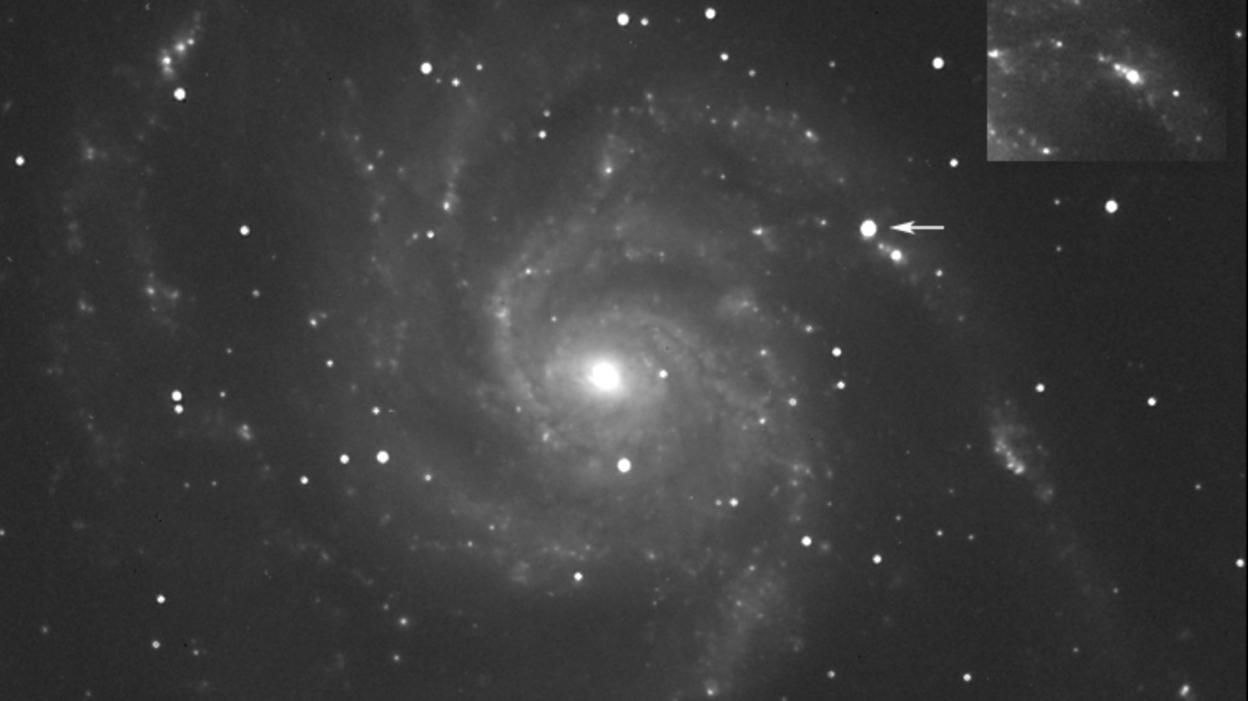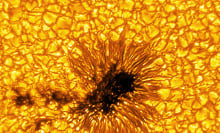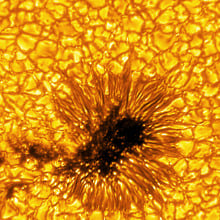Boom.
In the colossal Pinwheel galaxy, 25 million light-years away, a star has just exploded and is even visible through small telescopes. The supernova-hunting astronomer Koichi Itagaki discovered the radiant anomaly in the sky on May 19, enticing other scientists to train telescopes on the object.
Not all stars explode fantastically, in dramatic events called supernovae, at the end of their stellar lives. But stars around eight times the mass of the sun or larger do after exhausting their fuel and collapsing. Just over a decade ago, astronomers spotted a previous starburst in the Pinwheel galaxy, also known as Messier 101. Now it's happened again.
"Messier 101, the 'Pinwheel' galaxy, did it again," astronomer Gianluca Masi, who runs the sky-viewing endeavor the Virtual Telescope Project, wrote online(opens in a new tab). "After supernova SN 2011fe, one of the brightest ones of the last decades, this stunning 'cosmic island' offers us another huge cosmic explosion: supernova SN 2023ixf."
How to see the exploded star
You can't see the radiant explosion with the naked eye. But you can see it with small telescopes, Masi noted. And you can easily see it in Masi's image below. He also plans a viewing livestream(opens in a new tab) of the supernova on May 25 beginning at 22:00 UT(opens in a new tab) (17:00 ET, or 5 p.m. ET).
To us, even through telescopes, the supernova is a dot because it's profoundly far away. Remember, this didn't happen in our Milky Way galaxy — this is an entirely different galaxy. Yet it's positioned "head on" toward us, generally making the Pinwheel galaxy a sight to see. It's also huge. "The giant spiral disk of stars, dust, and gas is 170,000 light-years across — nearly twice the diameter of our galaxy, the Milky Way," NASA explains(opens in a new tab). "M101 is estimated to contain at least one trillion stars."
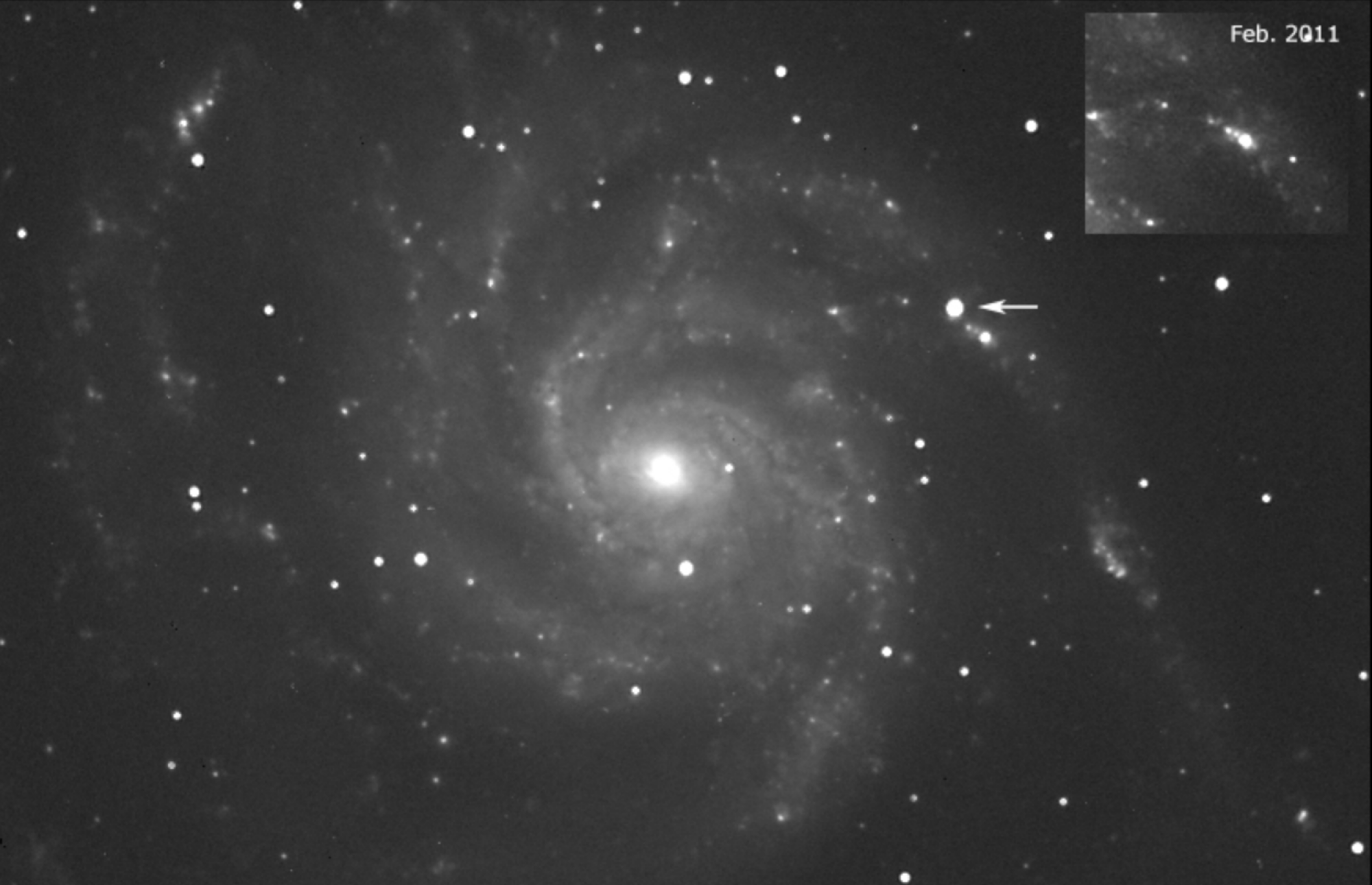
In cosmic terms, however, the Pinwheel galaxy is still relatively nearby. That makes this explosion all the more special. A supernova event happening this close to us only happens "around once a decade," tweeted Andy Howell(opens in a new tab), an astronomer who observed and researched the Pinwheel galaxy's previous supernova in 2011.
"You should be able to see it with backyard telescopes, for a few months, though it will just be a point of light," Howell added.
Tweet may have been deleted (opens in a new tab)
Fortunately, for those who endeavor to view the the Pinwheel galaxy on their own, it's a well-known place in the cosmos and regularly viewed by stargazers when it's visible. It's near the end of the handle of the Big Dipper constellation, which is marked by the star Alkaid. (The Big Dipper is also part of the bigger constellation Ursa Major, which you can see below.)
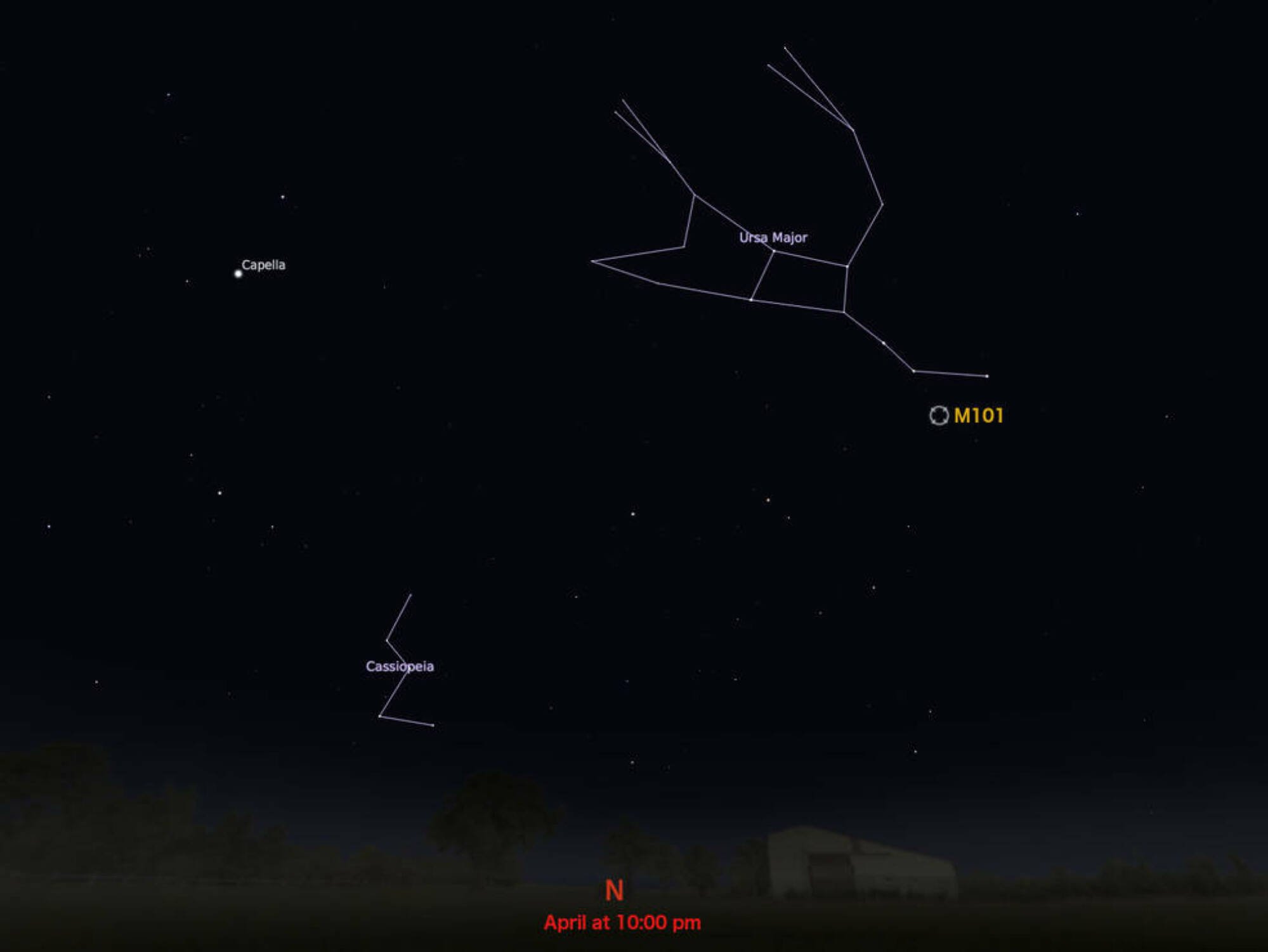
And while none of us has a school bus-sized telescope orbiting Earth, NASA does. Here's what the Pinwheel galaxy looks like through the legendary Hubble Space Telescope — though this detailed image was released in 2017, years before the recent supernova:
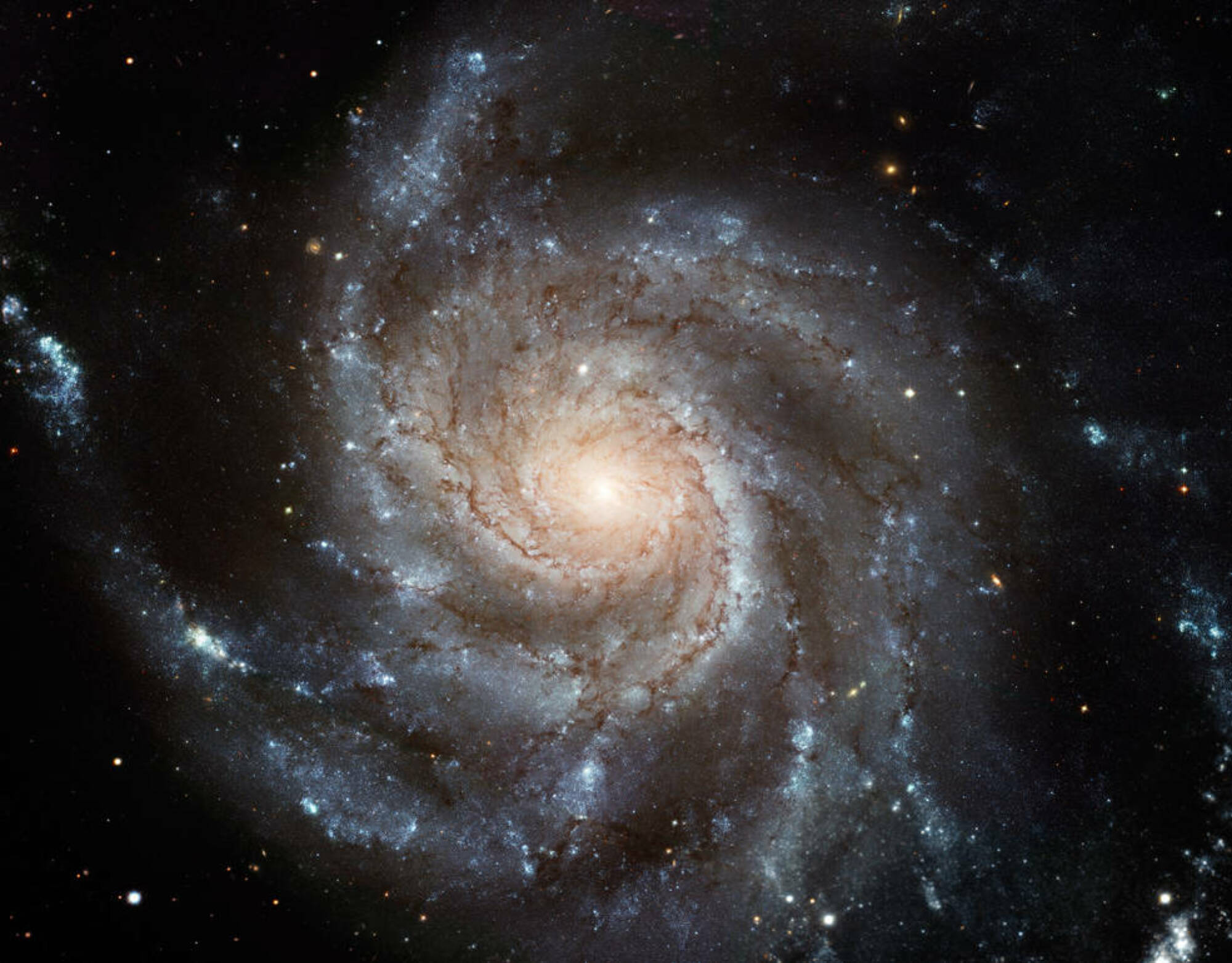
Want more science and tech news delivered straight to your inbox? Sign up for Mashable's Light Speed newsletter today.
In our galaxy, there are giant stars getting tantalizing close, or closer, to exploding. Some of the red giant stars, like Betelgeuse in the constellation Orion, will appear extremely bright in the night sky, outshining all other stars, when it eventually explodes.
Keep watching.
"We don't know where the next supernova will come from," Or Graur, an associate professor of astronomy at the University of Portsmouth who researches supernovae, recently told Mashable.
